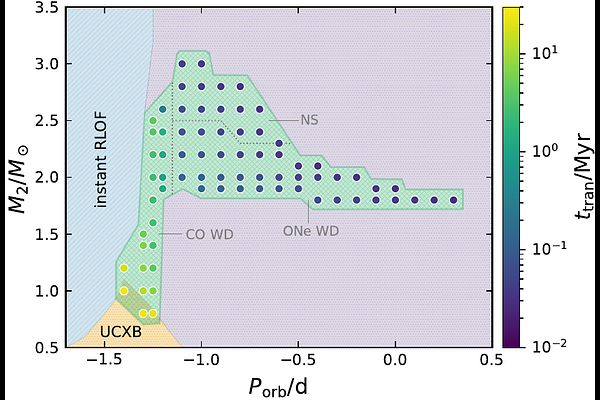Eclipsing millisecond pulsars with He star companions

Eclipsing millisecond pulsars with He star companions
Yunlang Guo, Bo Wang, Xiangdong Li, Dongdong Liu, Wenshi Tang
AbstractEclipsing millisecond pulsars (MSPs) are a type of pulsar binaries with close orbits ($\lesssim1.0\,$d). They are important objects for studying the accretion history of neutron stars (NSs), pulsar winds, and the origin of isolated MSPs, etc. Recently, a new eclipsing MSP, PSR J$1928+1815$, was discovered by the Five-hundred-meter Aperture Spherical radio Telescope. It is the first known pulsar with a He star companion, as suggested in Yang et al. The system features a short orbital period of $\sim0.15\,$d and a relatively massive companion $\gtrsim1.0\,M_\odot$. However, the origin of PSR J$1928+1815$ remains highly uncertain. In this paper, we investigated the formation of the new subclass of eclipsing MSPs containing (evolved) He star companions through NS + He star channel. We found that if a NS binary undergoes subsequent mass-transfer phases following Case BA or Case BB, it may appear as an eclipsing MSP during the detached phase. Additionally, we obtained the initial parameter space for producing eclipsing MSPs with He star companions. Using binary population synthesis approach, we estimated their birth rate to be $\sim2.1-4.7\times10^{-4}\rm\,yr^{-1}$, corresponding to a total number of $\sim55-150$ systems in the Galaxy. Moreover, we concluded that PSR J$1928+1815$ may originate from the evolution of an NS+He star system with an initial orbital period of $\sim0.1\,$d, which can undergo the Case BB mass transfer.